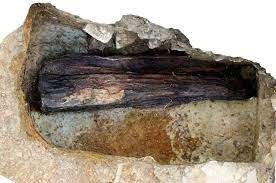Archaeologists from Cotswold Archaeology have uncovered a watermill as part of the HS2 archaeology program.
Excavations were conducted in conjunction with partners from CA and COPA, near the town of Buckingham in Buckinghamshire, England.
Historical records in the 1086 Domesday book, a manuscript record of the “Great Survey” of much of England and parts of Wales at the behest of King William I (known as William the Conqueror), show that the site was part of an earlier Anglo-Saxon estate that developed after the year 949.

Excavations revealed that the site was first occupied during prehistory, with the discovery of a possible ring ditch and a Mesolithic mace head found in a post-medieval quarry pit. The mace head possibly originated from a truncated deposit internal to the putative ring ditch.
The first depiction of a watermill can be found in 17th century historic maps, which fell in disuse by 1825 and was repurposed until eventually being demolished in the 1940’s.
Archaeological remains suggest that the watermill came into use during the 13th century, evidenced by partially exposed remains of three timber beams set in a substantial clay packing deposit, possibly forming the corner of a timber structure. Features relating to the watermill, bypass channel, mill race and outflow pond were still extant on site at the start of the archaeological works.


The final phase of mill structures was constructed in the late post-medieval period, indicated by substantial structures designed to funnel water to the mill wheel. The height of the walls and the wide funnel suggest the potential for a large volume of water to be flowing; however, the surviving mill race has a very gentle gradient, possibly as a result of modern management of the ditch following the mill’s disuse.

Excavations also revealed an associated building that contained two rooms constructed predominantly with stone. A series of postholes formed an internal partition within the northern room, which enclosed a stone rubble surface. A brick floor surface survived in the southern room, which (along with material recovered from the walls) are dated to the 18th century onwards.








